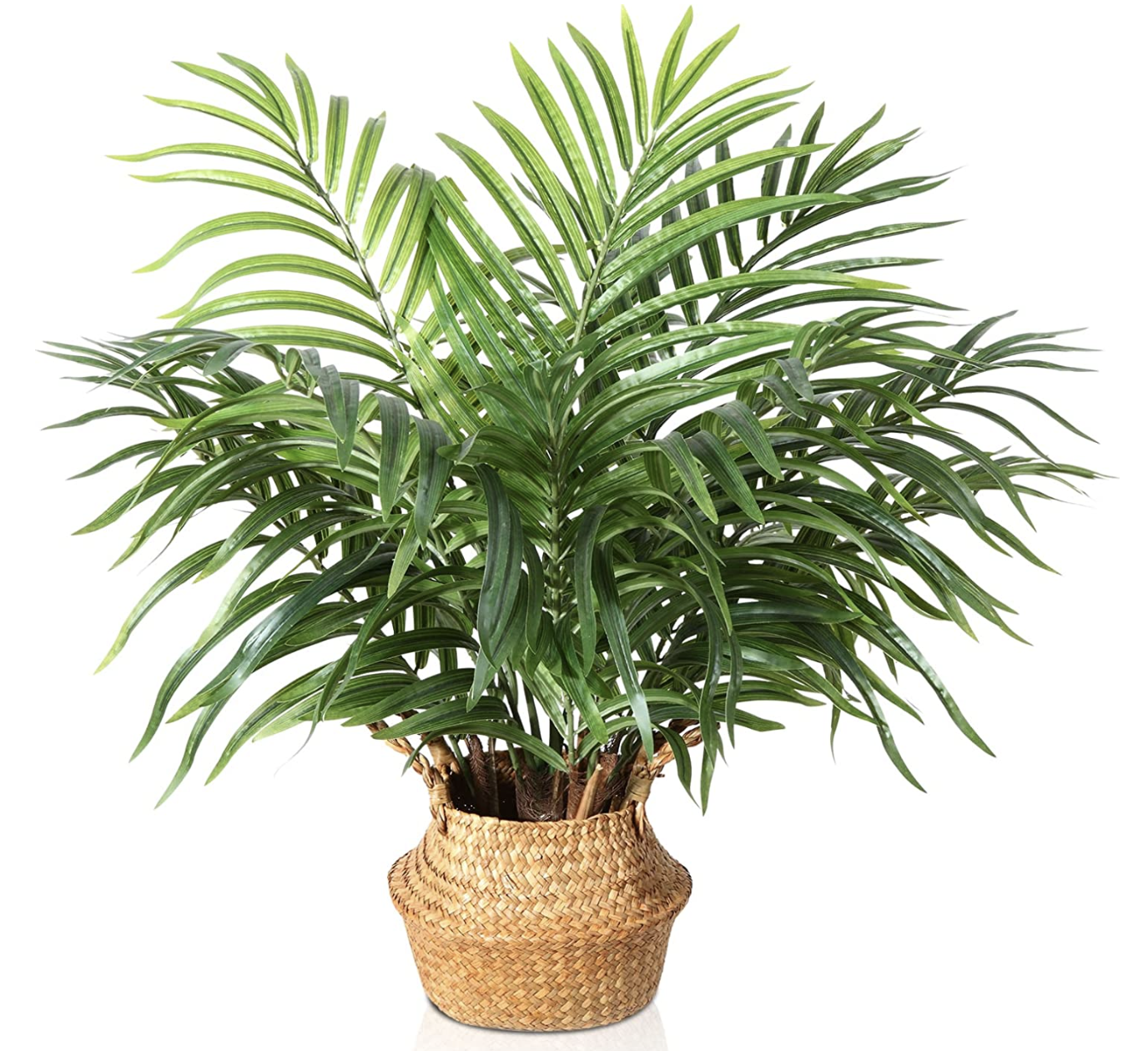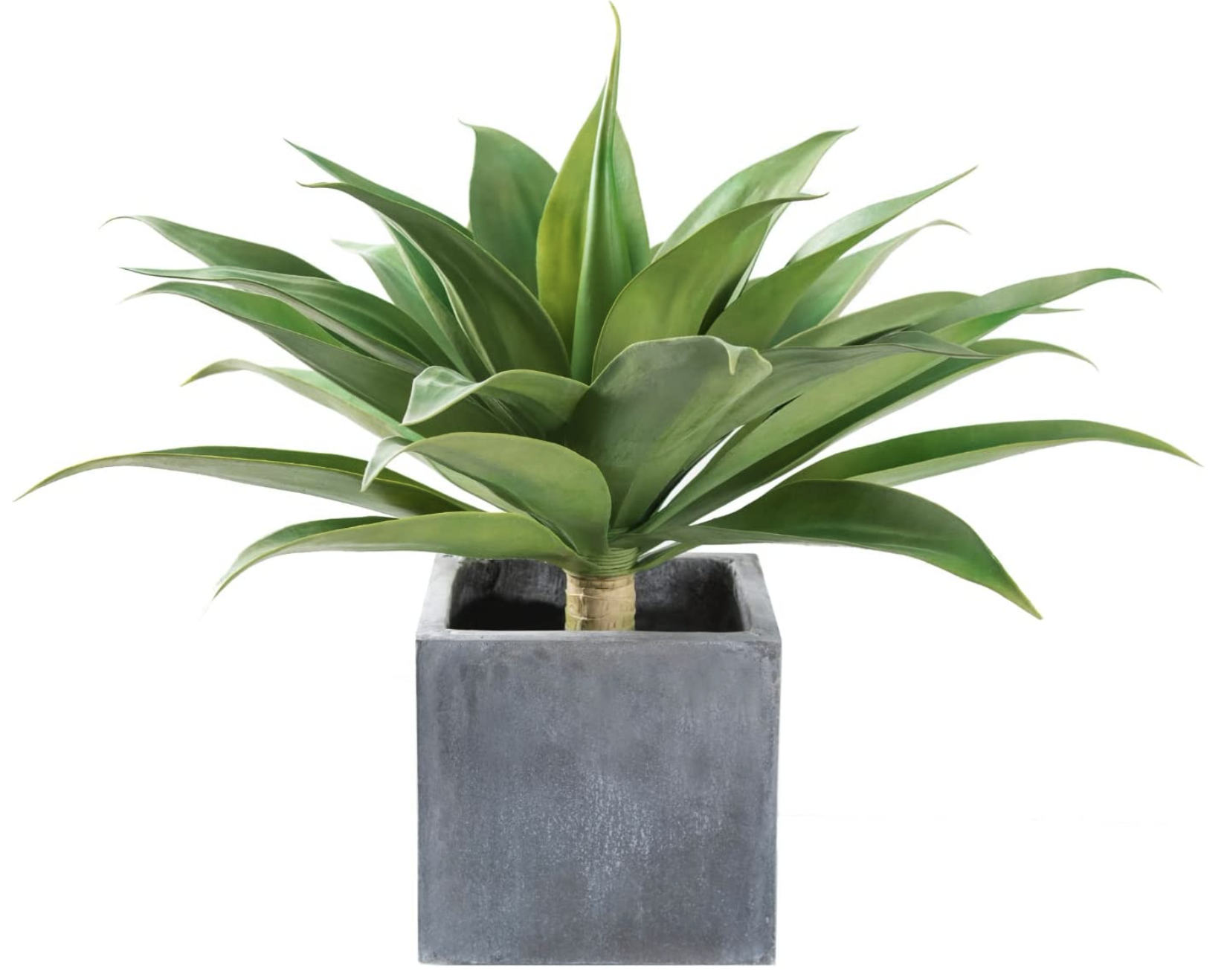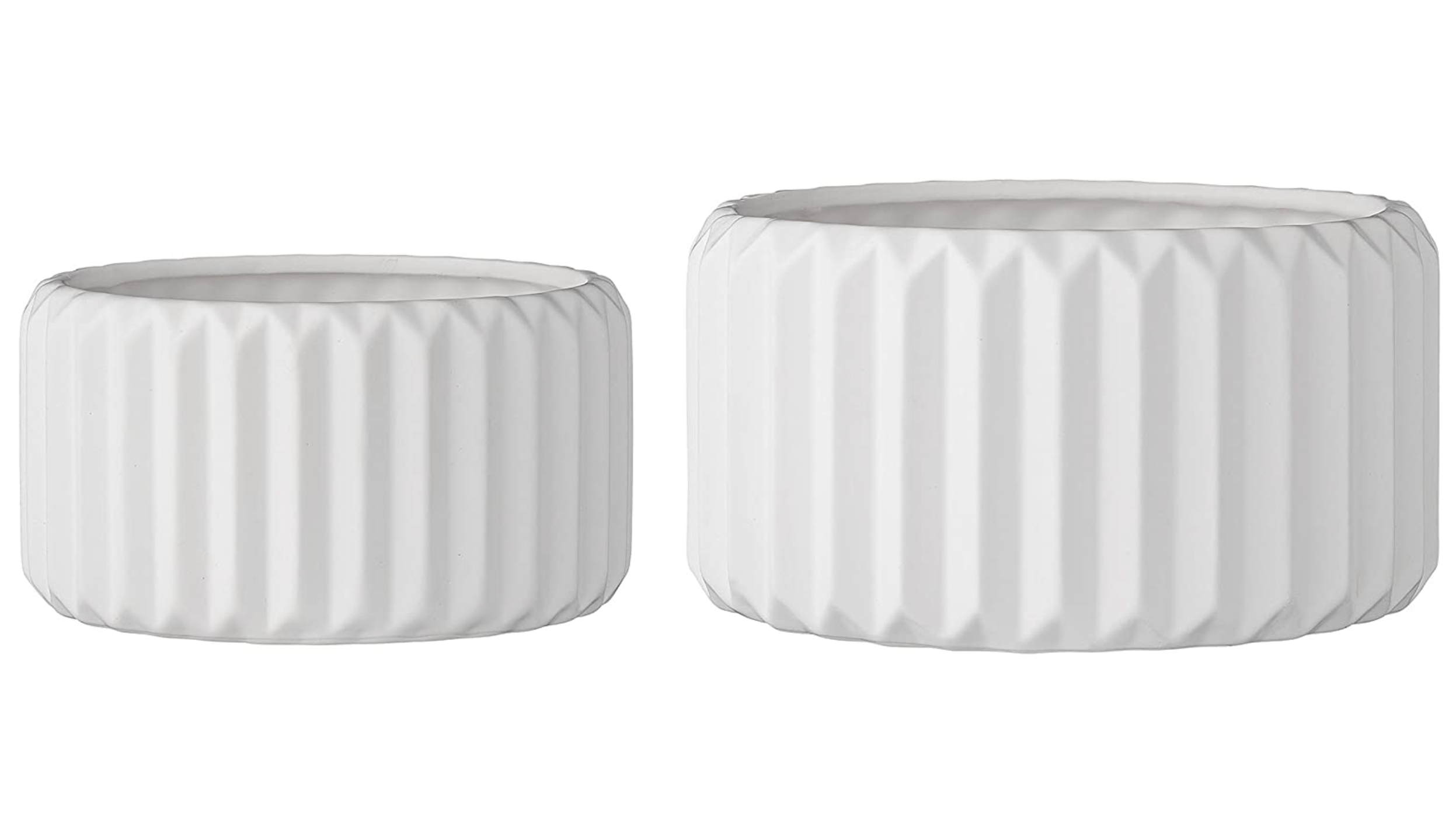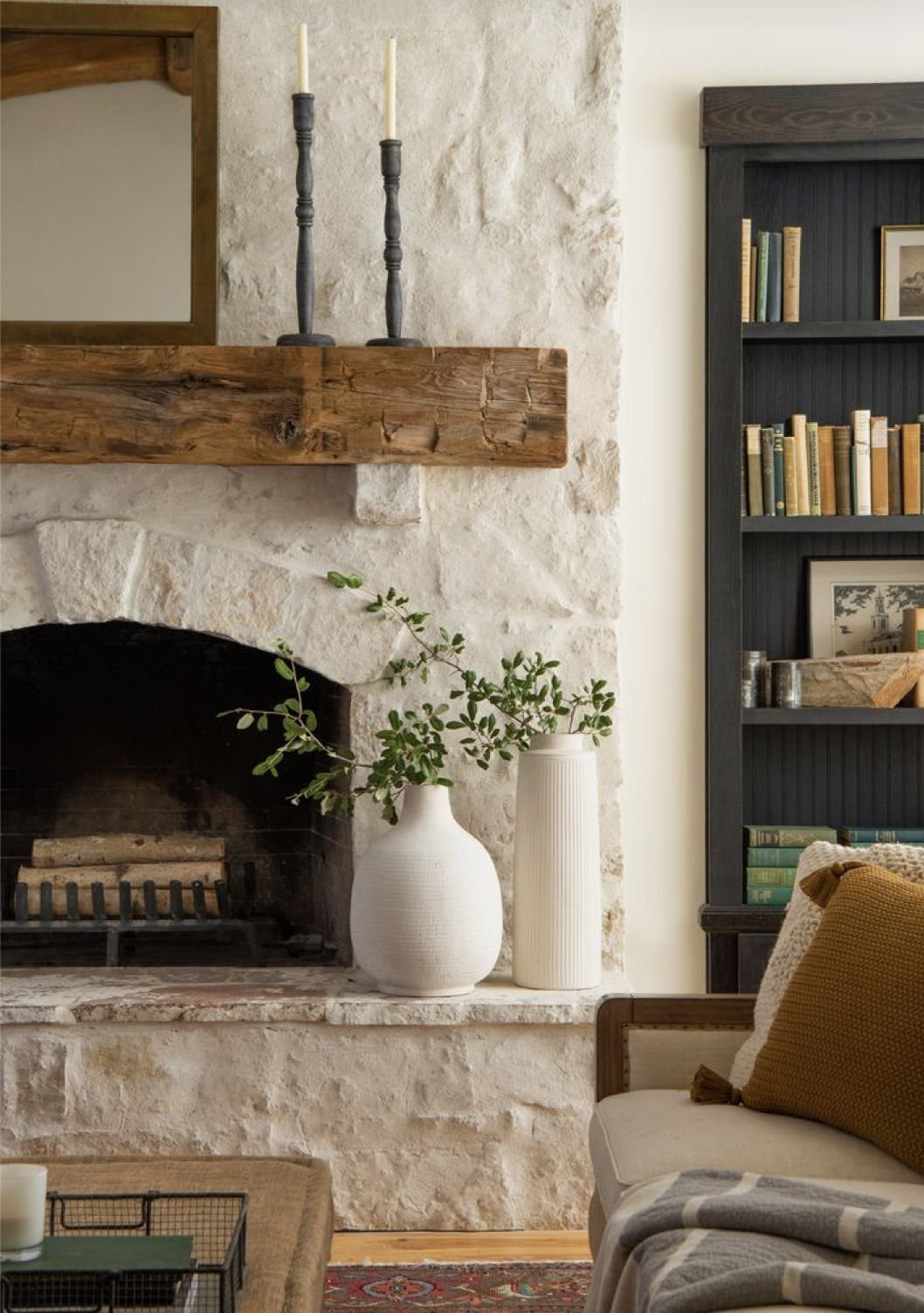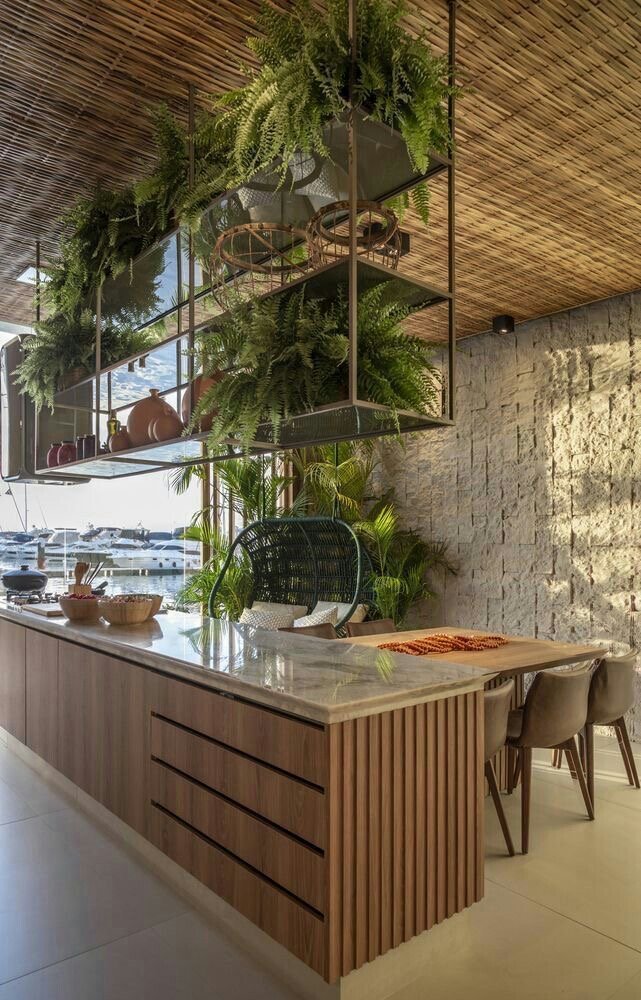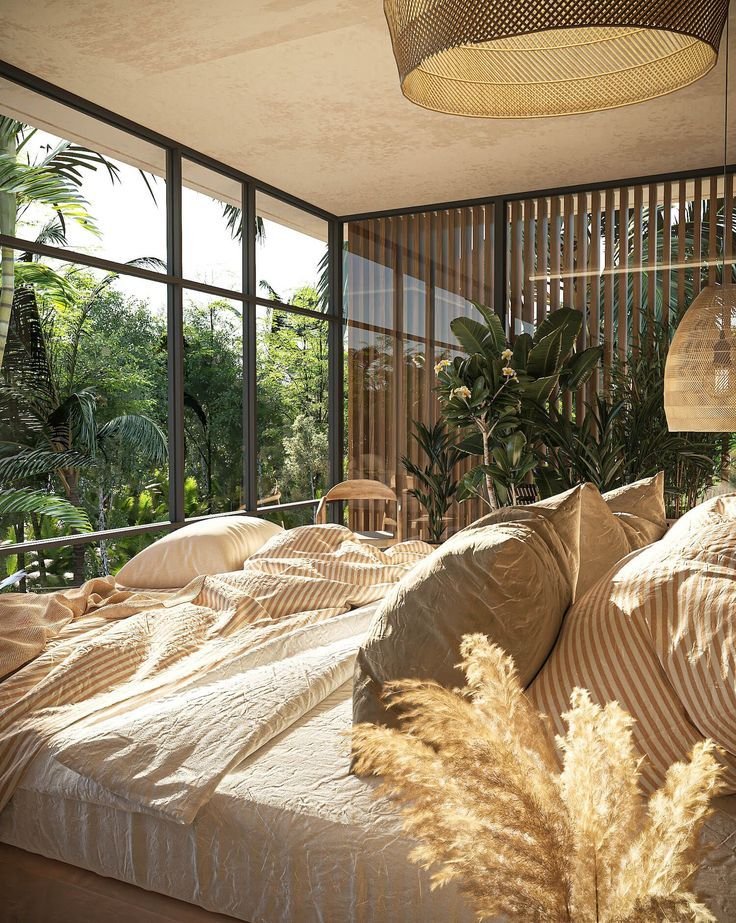Biophilic Design Style
What is the Biophilic Design Style?
Biophilic design incorporates elements of design that tie us to Mother Nature. This design creates an environment that enhances our overall mental and emotional wellbeing in our home. The presence of plants can reduce stress, enhance mood, prompt healing and provide comfort. It is based on the concept of biophilia, which is the innate human tendency to seek a connection with nature and other forms of life.
How you can create a biophilic home…
1. DECLUTTER
Declutter to create a space that will evoke calmness. Think about how you can use your space to its full potential –Start with the Marie Kondo way of thinking. If an item does not bring you joy and/or you have not used it in over a year - donate it or pitch it. Then invest in practical storage solutions that fit the design. Decorative storage bins can hide kid’s toys, desk and kitchen clutter or any item that looks messy and out of place. By decluttering your space, you are creating a calming environment.
Click the picture below for links to examples
2. ADD PLANTS
Research the different types of houseplants that will fit your lifestyle. Once you have done your research and are confident that those specific plants will work in your space buy them or swap plant clippings with your plant loving friends! Bonus points for propagating your own plants to make more new baby houseplants!
* Don’t have a green thumb, no worries! There are plenty of ways to incorporate nature into your life. Artificial plants, Art prints and biophilic fabric patterns of nature that you can incorporate into your home.
Here are a few example all found on Amazon.
3. LET IN THAT NATURAL LIGHT
Natural light isn’t only good for houseplants, it’s also good for our souls. This is one of the simplest forms of incorporating a biophilic interior design aesthetic into your space. Open those curtains and let the light pour in. Consider a natural wood or linen roman shade that can be lifted every morning in lieu of faux wood blinds or plantation shutters.
4. INFUSE YOUR SENSES
Think about how you can incorporate calmness into your everyday life using sight, smell, touch, taste, and movement. Think about how you want your home to smell when guests arrive, the texture from your furniture you sit on, the pots your plants are planted in, and the artwork displayed on your walls.
Click the picture below for links to examples
5. SELECT NATURAL MATERIALS
Think about how you can incorporate natural materials like wood, stone, water, cotton, leather, etc. into your furnishings, fabric, displays and décor. A quick example could be a stone hearth with a wood mantle, a jute rug under a wood dining table. The biophilic design isn’t just about plants, it’s also about the raw materials that are found in Mother Nature.
6. CHOOSE YOUR COLOR PALETTE WISELY
Color has a large impact on our moods and energy levels. If you want to create a biophilic design for your home stick with the natural tones a muted earth tones found in nature. You can even add in pops of color to mimic the natural environment of flowers, animals and rainbows.
Shapes, Curves and Patterns.Incorporating characteristics of our natural world is extremely appealing to our senses. Think about the shapes you see in your environment such as plants and the curve of their leaves, the patterns on animals, the outline of trees. Things like, fabrics with animal or leaf prints, curvy stone planters and furniture.
Where else do we see the Biophilic design aesthetic?
· RESORTS & HOTELS
All Inclusive resorts are only becoming more desired, so designers are trying to create a space that will stay steady with the trend. The biophilic design is perfect for this. You will see the design featured in resort guest rooms, public spaces, and outdoor areas. For example, guest rooms may feature natural materials like wood and stone, as well as views of gardens or natural landscapes. Public spaces like lobbies, restaurants, and lounges may incorporate living walls, water features, and other natural elements to create a calming and inviting atmosphere.
1 Hotel in Nashville, TN
Secrets Impressions Moxché
· SPAS
You will most commonly see this in treatment rooms, relaxation areas, and outdoor spaces. Treatment rooms may feature natural materials and textures, such as lighting and soundscapes designed to promote relaxation and well-being. Outdoor spaces may include gardens, water features, and other natural elements that create a connection with the nature, promote relaxation and rejuvenation.
Secrets Impressions Moxché
Dreams Natura Resort and Spa
Remember… The goal of biophilic design is to create a sense of calm and well-being, while also promoting productivity, creativity, and a connection to the natural world.





